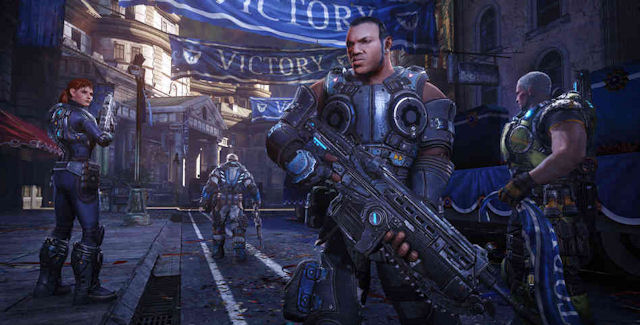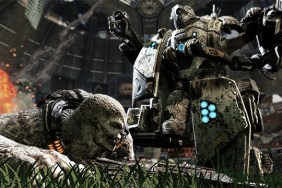Producer Chris Mielke of Epic Games gave a talk at GDC about "Artsourcing", the outsourcing of art assets, and how it can be useful for the development of triple-A games. While the talk focused on strategies to make this a successful way of optimizing art workflow for game development, it revealed a number of interesting things about Epic's process of game creation.
Mielke broke his talk into several different sections. The first was the outsourcing of art assets for Gears of War 3, the second on Infinity Blade and Infinity Blade II and the challenges of developing assets for mobile platforms, and the last on the development of cinematics and how outsourcing helped them create more high-end output with a small cinematics team.
Mielke began by talking about different art assets that might be sent out, specifying character artwork, weapons, and environments as the primary assets outsourced. These excluded major characters or weapons that were iconic (like the Lancer) but included characters who were in supporting roles; he showed a slide of 3D models created for an unused cinematic featuring Dizzy's twin daughters. For weapons, he showed the 3D model of the shotgun turret the outsource team had created, along with the original concept sketch.
All in all, Mielke noted that 520 art assets had been created by the “artsource” team for GoW3, approximately thirty per cent of the total assets. He suggested that for small creative teams, this was a good practice to keep costs down (since contract workers don't need to be hired with benefits). And Epic is small, with only 182 employees at their main hub in Cary, North Carolina, and 275 worldwide. This may seem like a lot, he said, until you account for all the people doing QA and other jobs that weren't content creation.
He also showed an example from Gears of War: Judgment that revealed how artistic renderings of environments, like digital paintings, were broken down by the dev team into architectural designs, and then separated into modular segments that could then be artsourced to other teams that would create the basic 3D architecture and textures.

For mobile platforms, it sounded like there was even more work done outside of house. Mielke threw up a slide that described the process as "All or Nothing." Bosses, weapons, and environmental elements were farmed out to the artsource teams for 3D rendering. In this case, the more stringent requirements of the engine meant having to make sure that the artsource team knew it had to keep its “vert count” down (vert = vertices; fewer polygons).
Finally, Mielke showed how the company "Artsourced" elements of its cinematics. In this case, using a cinematic example from Gears of War: Judgment, storyboards were outsourced to a company called ZOIC. From these, animatics were produced, which were then used for mo-cap.
Naughty Dog has become famous for its use of the actors in their games on the mo-cap set with live audio recording. Epic instead uses local dramatic actors, from whom the animators also use elements of their facial performance. In a picture-in-picture presentation, they showed the storyboards and mo-cap performances while the final cinematic played. The local actors' voices were not utilized, but you could see how their facial performances were used for the animations (rather than those of the voice actors who would later provide the final audio for the mix from SoundDeluxe Studios).
Mielke made it a point to highlight that the quality of many of these outsourced assets was high enough that some were included in the Gears of War 3 artbook. This was partly due to the strong communications made by Epic, their policy of a 24-hour feedback turnaround time, and their willingness to give their "Artsourcing" partners direction when something didn't work, rather than moving production of those elements in-house.
It's worth noting that, unlike the outsourced boss fights on Deus Ex: Human Revolution and the reported outsourcing of much of Aliens: Colonial Marines' solo campaign, Mielke only specified that they outsourced art assets and not game design. All in all, it provided a strong argument for game companies that use outsourcing of the development of art assets, if done smartly and with strong communication between the in-house artists and designers and the outsource design teams.







